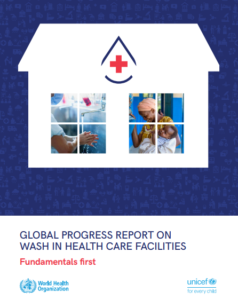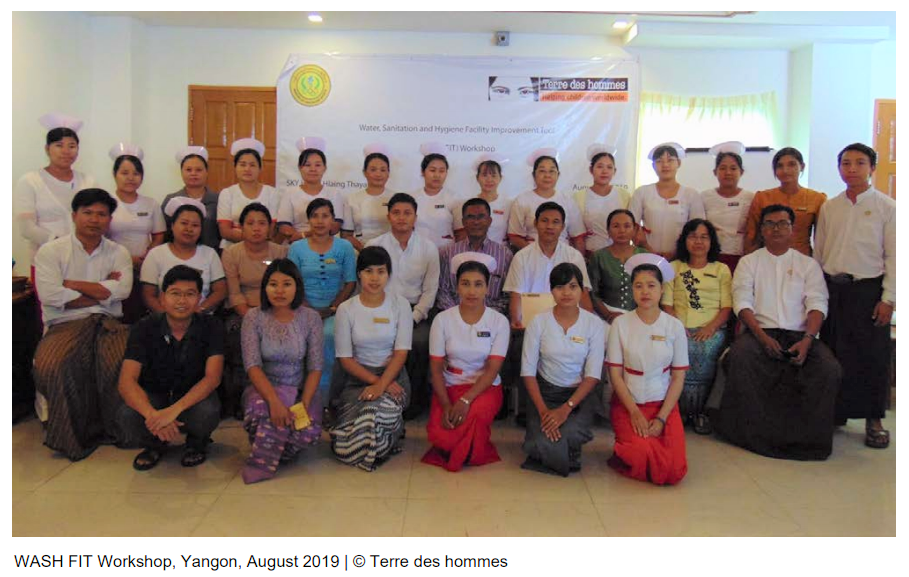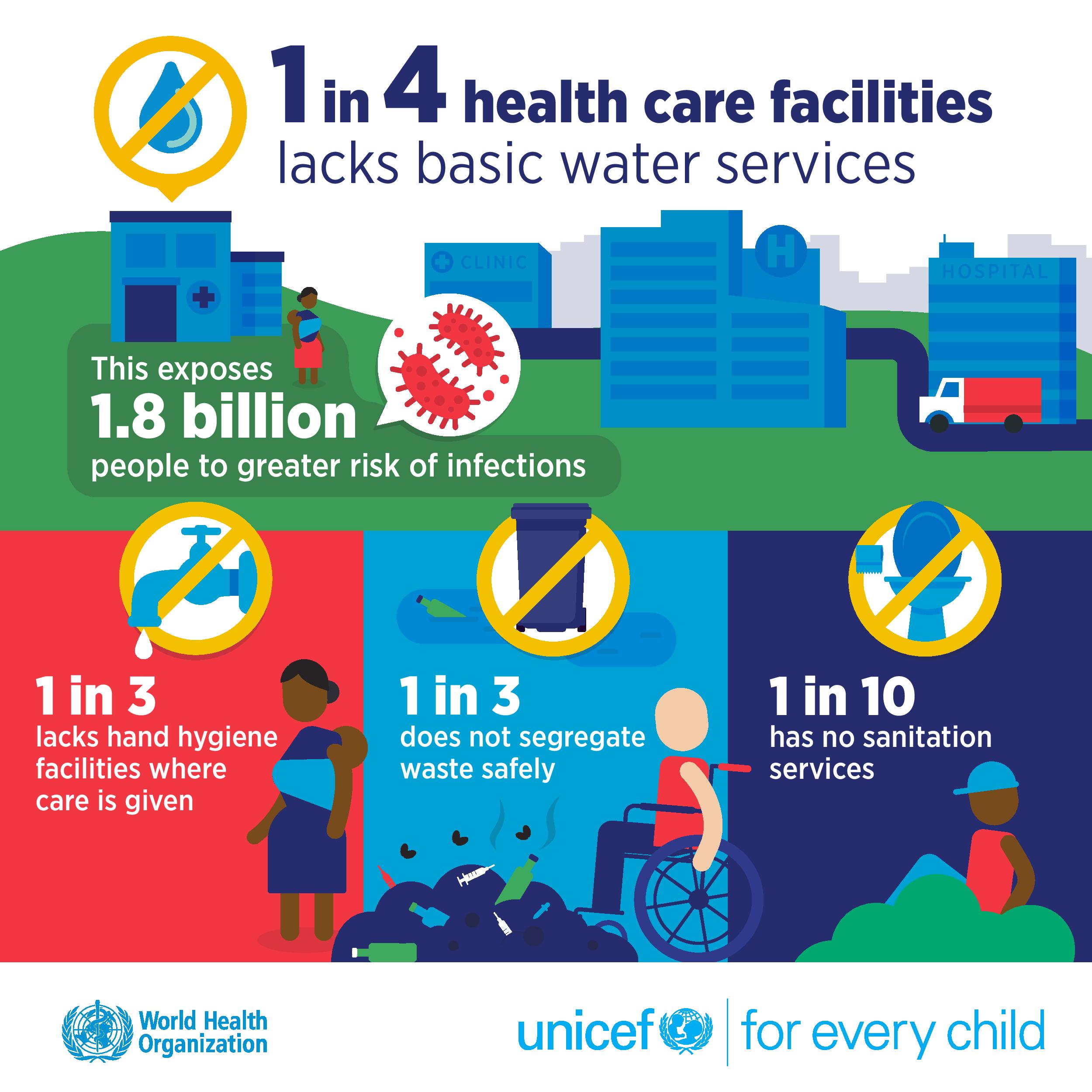21. December 2020
 The recently published Global Progress Report on WASH in Health Care Facilities (HCF) features contributions of several members of the Swiss Water and Sanitation Consortium (SWSC).
The recently published Global Progress Report on WASH in Health Care Facilities (HCF) features contributions of several members of the Swiss Water and Sanitation Consortium (SWSC).
These include the adaptation of the WASH Facility Improvement Tool (WASH FIT) for COVID-19 in Mali by Terre des hommes as well as Helvetas’ role in supporting the Ministry of Health in Benin to join 46 other countries in sharing progress on country level commitments taken in the 2019 World Health Assembly.
WASH FIT Learnings from Terre des hommes in Myanmar on WHO/UNICEF Knowledge Portal
Furthermore, a learning paper on piloting WASH FIT in the Myanmar health system by Terre des hommes is now available for download on the WHO/UNICEF knowledge management platform.
Among the main learnings from the first six months of the WASH FIT project implementation by Terre des hommes in Myanmar, the following stand out:
- WASH in HCF is a new topic for many HCF Management Committees and local authorities: Include orientation on infection prevention and control, the WASH FIT process and contextualized indicators. Time invested in stakeholder understanding WASH FIT processes is paramount.
- While technical expertise is important, WASH FIT requires skills in community mobilization: Plan time and resources to train local authorities/partners on facilitation techniques. An expert in community mobilization should coach the process – s/he need not have a WASH background.
- Monitor signs that WASH FIT team and HCF Management Committee are becoming risk aware: After the first WASH FIT exercise, community members and HCF personnel demonstrated risk awareness (e.g. citing inadequate space between toilets and tube wells).
Global Progress Report – Gaps and Responses
Since 1990, WHO and UNICEF have been jointly producing regular updates on water, sanitation and hygiene. They are further responsible for monitoring the 2030 Sustainable Development Goal targets 6.1 and 6.2 and support global monitoring of other WASH-related SDG targets and indicators.
The report identifies major global gaps in WASH services:
- one third of HCF do not have what is needed to clean hands where care is provided,
- one in four facilities has no water services,
- 10% of HCF have no sanitation services.
This means that 1.8 billion people use facilities that lack basic water services and 800 million use facilities with no toilets.
Across the world’s 47 least-developed countries, the challenges are even greater:
- half of HCF lack basic water services,
- one in four HCF has no hand hygiene facilities at points of care,
- three in five HCF lack basic sanitation services.
The major gaps in water, sanitation and hygiene services in health care facilities are putting people that work at or use these facilities at heightened risk of COVID-19 and other diseases.
The Global Progress report also describes the global and national responses to the 2019 World Health Assembly resolution on WASH in HCF. More than 70% of countries have conducted related situation analyses, 86% have updated and are implementing standards and 60% are working to incrementally improve infrastructure and operation and maintenance of WASH services. The report includes four recommendations to all countries and partners, particularly health and community leaders to accelerate investments and improvements in WASH services in HCF. These are:
1. Implement costed national roadmaps with appropriate financing.
Costed national roadmaps on WASH in health care facilities provide the blueprint for action, a mechanism for coordination, and, when appropriately financed, enable comprehensive and sustainable incremental improvements. Such roadmaps should either be embedded in or directly coordinated with broader health and infrastructure planning and processes.
2. Monitor and regularly review progress in improving WASH services, practices and the enabling environment.
While the global database is substantial, with 154 country files, gaps remain. Data on environmental cleaning, higher levels of WASH services and aspects of sanitation are especially lacking. Global WASH indicators should be incorporated into facility surveys and regular health monitoring and data should be regularly collected, analysed and used to direct resources and prioritize action.
3. Develop capacities of the health workforce to sustain WASH services and promote and practice good hygiene.
Sustaining WASH services, particularly cleaning and safe management of health care waste, requires dedicated, trained and supported staff. These non-health care providing staff, who are often overlooked and undercompensated, need to be recognized and elevated within health workforce policies, programming and budgeting.
4. Integrate WASH into regular health sector planning, budgeting and programming to deliver quality services, including COVID-19 response and recovery efforts.
The COVID-19 pandemic has exposed stark inequities in public services across a range of sectors, including for health and WASH. Government and external donors need to prioritize investments in core health system functions that are fundamental to protecting and promoting health and well-being. WASH and waste are “common goods for health” that must be financed if any other health objectives, including the primary goal of universal health coverage, are to be achieved

